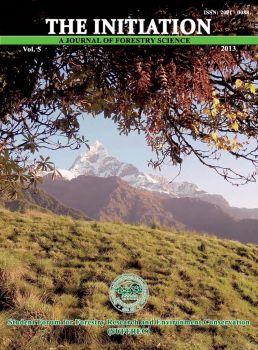Role of Tree Breeding in Timber and Wood Supply in World and India: Status and Outlook
DOI:
https://doi.org/10.3126/init.v5i0.10266Keywords:
Hybrids, Seed orchards, Micro-propagation, Biotechnology, Tree ImprovementAbstract
Tree breeding is an important component of tree improvement which involves the application of genetic principles for the mass production of seedlings with desired traits in order to achieve higher productivity, better adaptability of the environment and vigorous growth rate. It helps in increasing yields and shortened rotations so it has a large potentiality to supply timber and wood demand of the world. Species choice, provenance selection and propagation method are the major aspects of tree breeding. Plus tree selection, progeny testing, provenance test and vegetative propagation have been used since early of civilization and often regarded as conventional tree breeding techniques while seed orchards, clonal propagation, somatic embryogenesis, micro-propagation or in-Vitro propagation, and biotechnology are modern tree breeding techniques. Different countries have been developing tree breeding techniques and achieving maximum benefits from it. Southeast Asia is using Acacia mangium, A. crassicarpa, Gmelina arborea, and Eucalyptus spp.; Populus deltoids, Casuarina equisetifolia, Eucalyptus spp. have been using by India; Teak has been vegetative propagated in Thailand; Salix babylonica has been growing in Greece for biomass production. Increasing yield and shortened rotation are the major prospects while loss of genetic diversity, higher production costs and requirement of constant upgrading are the major hindrances of tree breeding.
DOI: http://dx.doi.org/10.3126/init.v5i0.10266
The Initiation 2013 Vol.5; 153-163

